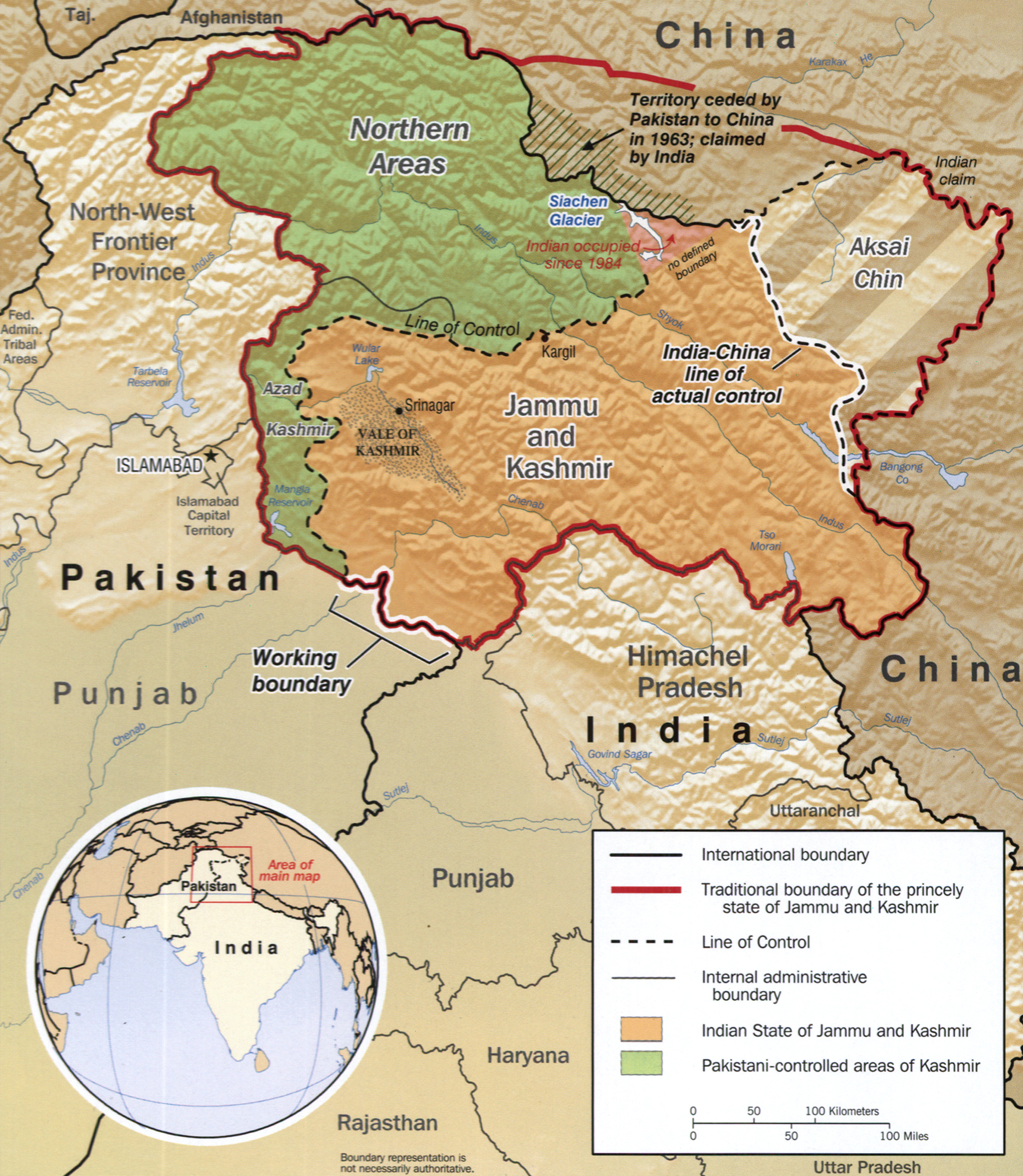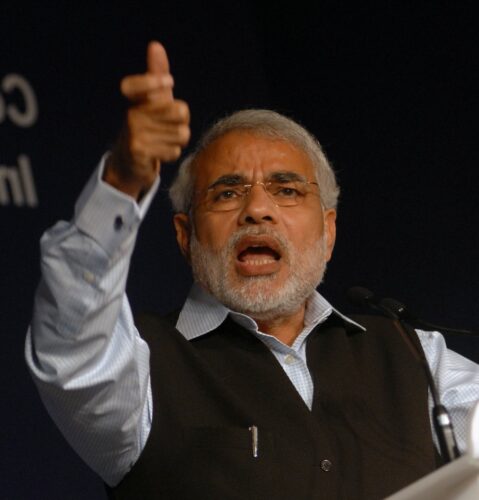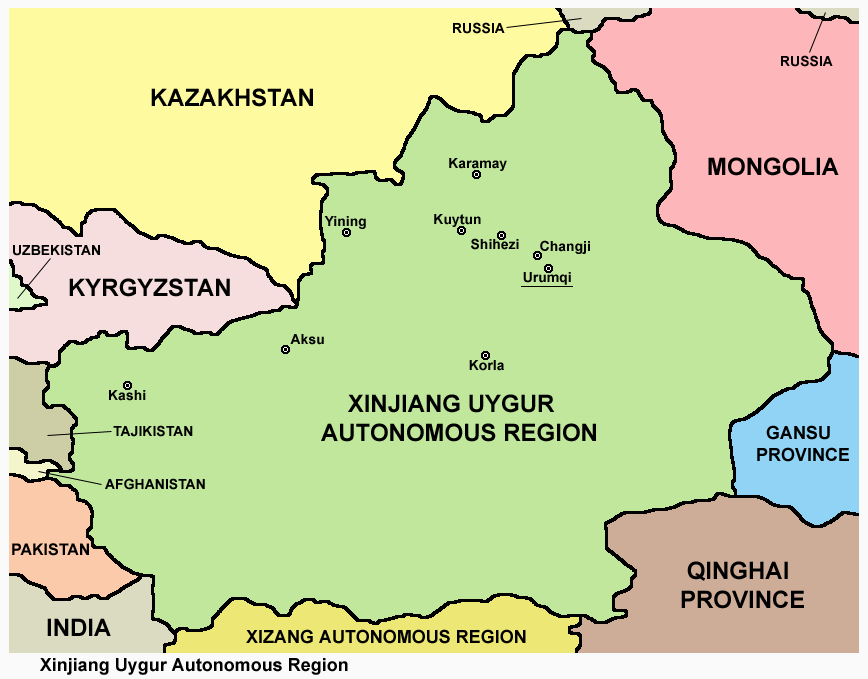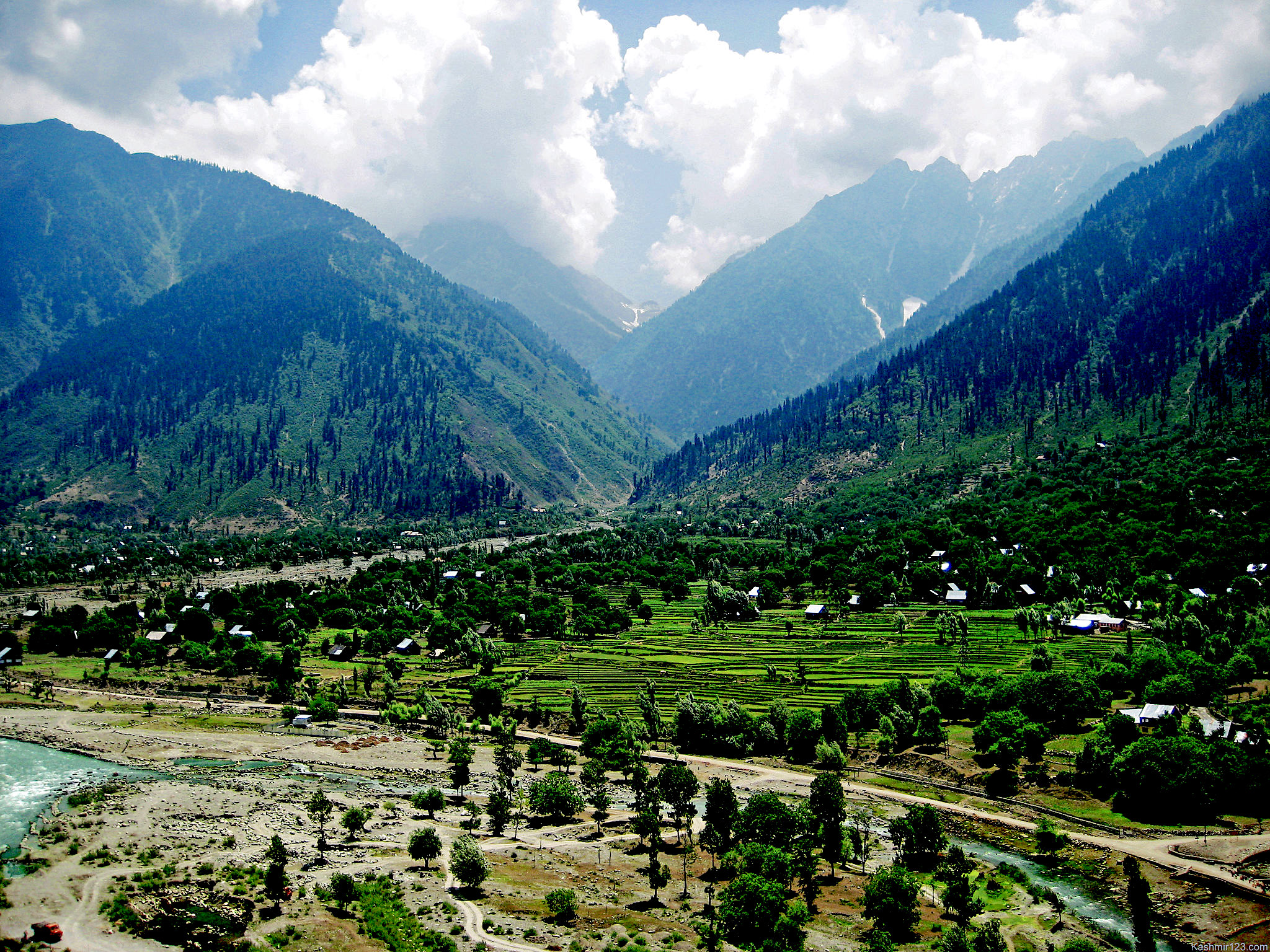The Indo-China border is a strategic chessboard and it’s gotten way more complex.
By Pepe Escobar
Special to Consortium News
 It was straight from an Orientalist romantic thriller set in the Himalayas: soldiers fighting each other with stones and iron bars in the dead of night on a mountain ridge over 4,000 meters high, some plunging to their deaths into a nearly frozen river and dying of hypothermia.
It was straight from an Orientalist romantic thriller set in the Himalayas: soldiers fighting each other with stones and iron bars in the dead of night on a mountain ridge over 4,000 meters high, some plunging to their deaths into a nearly frozen river and dying of hypothermia.
In November 1996, China and India had agreed not to use guns along their 3,800 km-long border, known as the Line of Actual Control (LAC), which sports an occasional tendency to derail into a Line Out of Control.
Yet this was not just another Himalayan scuffle. Of course there were echoes of the 1962 Sino-Indian war – which started pretty much the same way, leading Beijing to defeat New Delhi on the battlefield. But now the strategic chessboard is way more complex, part of the evolving 21st Century New Great Game.

Indian army marching in 1962 war, during which Indian Air Force was not used. (Indian Defence Review)
The situation had to be defused. Top military commanders from China and India finally met face to face this past weekend. And on Tuesday, Chinese Foreign Minister spokesman Zhao Lijian confirmed they “agreed to take necessary measures to promote a cooling of the situation.”
The Indian Army concurred: “There was mutual consensus to disengage (…) from all frictions areas in Eastern Ladakh.”
A day later, the breakthrough was confirmed at a videoconference meeting of the three foreign ministers of Russia, India and China, also known as the RICs: Sergey Lavrov, Subrahmanyam Jaishankar and Wang Yi. President Vladimir Putin, Prime Minister Narendra Modi and President Xi Jinping Xi will meet in person on the sidelines of the G-20 summit in Saudi Arabia next November.
And that will follow probably another videoconference special next month, in St. Petersburg, during the combined summits of the BRICS and the Shanghai Cooperation Organization (SCO.)
So How Did We Get Here?

CIA map from 2002 showing traditional borders of Jammu and Kashmir. (CIA, Wikimedia Commons)
Our Himalayan drama starts way back in October 1947, when the Maharaja of Kashmir signed an Instrument of Accession – joining the dominion of India in return for military support. As much as the Raj, Kashmir was also partitioned: West and North became Azad (“Free”) Kashmir and Gilgit-Baltistan, under Pakistan; the state of Jammu and Kashmir was to become an autonomous part of India; and significantly Aksai Chin, historically part of Tibet, became part of China.
On a personal level, this has always been among my top “roof of the world” travel/reporting areas. Not only for the unrivalled, breathtaking geological apotheosis, but for the people – Hunzakut, Baltistanis, Kashmiris, Tibetans.
Both Kashmirs – Pakistani and Indian – are majority Muslim. Everywhere you go you feel you’re in Central Asia, not India. Barren Aksai Chin is virtually population-free, apart from scattered military posts. Eastern Ladakh, historically and culturally, was part of the Tibetan plateau. The people are Buddhist, and speak a similar Tibetan dialect to the people of Aksai Chin.
Modi’s Move

Narendra Modi in 2008. (Norbert Schiller,World Economic Forum, Wikimedia Commons)
The root of all contemporary strife is to be found less than a year ago, in August 2019. That’s when the Hindutva – Hindu nationalist, quasi-fascist – government led by Modi unilaterally revoked parts of the Indian constitution that established Jammu & Kashmir (J&K) as an autonomous region.
Islamic J&K – heir to a long religious and cultural tradition – was deprived of a parliament and local government and de facto separated from Buddhist Ladakh and its very sensitive eastern border with China. They all fell under direct New Delhi control.
J&K’s characteristics shielded it since 1947 from mass immigration by Hindus. That’s now gone. The game now, for New Delhi, is about engineering a demographic change, turning a majority-Muslim area into majority-Hindu.
And even that might not be enough. For Home Minister Amit Shah, not only what the Hindutva describe as Pakistan-occupied Kashmir (PoK) but also Aksai Chin as part of J&K. They see the whole Kashmir Valley as an integral part of India.
It’s easy to imagine how this goes down in Islamabad and Beijing.
Add to it the interlocked strategic importance of the Indus river system – Pakistan’s main source of water: it starts in the J&K mountains. So it’s no wonder that for Islamabad, the whole province should be part of Pakistan, not India.
Recently, the action across the Line of Actual Control has been breathless.
India revamped the airfield of Daulet Beg Oldie (DBO), located on an old trade route through the Karakoram pass, and crucially only 9 km away from Aksai Chin. That happens to be right on India’s physical link to Xinjiang, and not Tibet.

(PANONIAN, CC0, Wikimedia Commons)
In parallel, India built the 255 km long Darbuk-Shayok-DBO road. This is an appraisal of what is innocently described as the single lane Indo-China border road. What it means in practice is that New Delhi now has more leeway to transport troops and military equipment across the LAC. No wonder Beijing interpreted it as an extra – unwanted – pressure on Aksai Chin.
As India built a new military access road, they had no clue the Chinese had finished their own on Aksai Chin: Highway 219, which links ultra-strategic Tibet to Xinjiang. Highway 219 then links to the legendary Karakoram Highway – which starts in Kashgar, crosses the border and weaves all the way down to Islamabad.
An important stretch of the Aksai Chin was in fact ceded to China by Islamabad in 1963 in exchange for financial and logistical support.
Predictably there has been a steady patrolling/military buildup on both sides. There are as many as 225,000 Indian troops right behind the LAC. That is matched by an undisclosed number of very well-equipped Chinese troops. The Hindu showed satellite images of Chinese movements at Galwan before the border clash. No less than three Chinese military sub-districts – subordinated to the military in Tibet and Xinjiang – were involved in the skirmishes in Galwan.
It’s All About CPEC

Prime Minister Narendra Modi with Chinese President Xi Jinping. (Narendra Modi, Flickr)
The China-Pakistan border at the Khunjerab pass and the area right to the south, the visually stunning Gilgit-Baltistan, happen to fall exactly into what the Indians call Pakistan-occupied Kashmir (PoK).
There’s absolutely no way Beijing would ever allow any sort of New Delhi regional adventurism. Especially because this is prime China-Pakistan Economic Corridor (CPEC) territory – one of the key nodes of the New Silk Roads, all the way to Islamabad and down to the port of Gwadar in the Indian Ocean.
In the near future, Gwadar will have solidified its direct energy links to the Persian Gulf, and China may even expand them by building an oil/gas pipeline all the way to Xinjiang.
Counteracting China’s New Silk Road nodes, we find, strategically, India’s ambiguous role in both the Quad (alongside the U.S., Japan and Australia) and the U.S. “Indo-Pacific” scheme — essentially a mechanism to contain China.
In practice, and in the name of its own, self-described “strategic autonomy,” New Delhi is not a full member of the Quad. The Quad is such a fuzzy concept that even Japan and Australia are not exactly enthusiastic.
U.S.-India defense “ties” are legion – but nothing really significant, apart from a self-defeating move by New Delhi to cut off oil imports from Iran. To appease Washington, New Delhi prodigiously hurt its own investments in the port of Chabahar — only 80 km away from Gwadar — which until recently was touted as the Indian Silk Road gateway to Afghanistan and Central Asia.
Apart from that, we find – what else – threats: the Trump administration is furious that New Delhi is buying S-400 missile systems from Russia.
Self-Reliance or Containment?

Madras regiment of Indian Army. (Mannat Sharma, CC BY 3.0, Wikimedia Commons)
China is India’s second-largest trade partner. Beijing imports around 5 percent of everything made in India, while New Delhi imports less than 1 percent of Chinese production.
Only two months ago, in an address to the nation about Covid-19, Modi insisted on “self-reliant India” and “human centric globalization,” focused on local manufacturing, local markets and local supply chains.
For all of Modi’s bluster, foreign adventurism is incompatible with India’s tradition of non-alignment – and it would divert much needed efforts towards “self-reliance.”
There was a lot of expectation that India and Pakistan, becoming full-time members of the SCO, would defuse their myriad problems. That’s not what happened. Yet the SCO – along with the BRICS – is the way to go if India wants to become a significant player in the emerging multipolar world.
Beijing is very much aware of imperial containment/encirclement strategies. There are more than 200 U.S. military bases in the Western Pacific. The New Silk Roads, or Belt and Road Initiative (BRI), boast no fewer than seven connectivity corridors – including the Polar Silk Road. Five of these are overland. The only one including India is BCIM (Bangladesh-China-India-Myanmar).
If India wants out, BRI will keep rolling all the way to Bangladesh. Same with the Regional Comprehensive Economic Partnership (RCEP) negotiated by 15 Asia-Pacific nations. They want India in. New Delhi is paranoid that opening up its markets will balloon the trade deficit with China. With or without India, RCEP will also keep rolling, alongside BRI and CPEC.
Quite a few among upper caste ruling class Hindus cannot see that they are being played to the hilt, full time, by the imperial masters as a war front against China.
Yet Modi will have to play realpolitik – and realize that India is not a priority for Washington: rather a pawn in a full spectrum dominance, “existential threat” battle against China, Russia and Iran, which happen to be the three key nodes of Eurasia integration.
Washington will persist in treating New Delhi as a mere pawn in the Indo-Pacific drive for China containment. India – in theory very proud of its tradition of diplomatic independence – would rather use its ties with the U.S. to counterpunch China’s power across Southeast Asia and as a form of deterrence against Pakistan.
Yet Modi cannot possibly bet the farm on the Trump administration following his lead. The only way out is to sit down and talk to his BRICS/SCO partner Xi: next month in St. Petersburg and in November in Riyadh.
Pepe Escobar, a veteran Brazilian journalist, is the correspondent-at-large for Hong Kong-based Asia Times. His latest book is “2030.” Follow him on Facebook.
The views expressed are solely those of the author and may or may not reflect those of Consortium News.
Please Contribute to Consortium
News on its 25th Anniversary
Donate securely with  PayPal here.
PayPal here.
Or securely by credit card or check by clicking the red button:


The article appears to weave around facts and options. Not sure about the economic numbers but China is the home to the supply chain for pretty much everything. For example Indian dominates generic drug manufacturing and buys 68 % of the ingredients from China. Then there are the Tibetan waters sources and China with a 4x GDP and military budget. The Chinese would have run right through to Mumbai in 1962 had Nehru not Called Kennedy. Bruce Riedel has a great book on this. Not sure what to make of India’s options today
How is the Hindutva quasi-fascist? They are voiding out their own constitution. Why are they quasi?????
Unfortunately, anti-imperlaists of western mold like Pepe never fail to disappoint me regarding the free pass they give to other less capable imperialists nation – whether it is China, India, or Turkey etc..,
It is all well and good to highlight the plight of Kashmiris regarding Indo-China conflict. But a willfull omission of occupation of Tibetian and Uygur homelands by Hans Chinese is not going to convince Indians that you are an honest actor. Mostly importantly, the victimized Tibeans and Uygur muslims will never be allies to us, western left, if we can’t recognize their right to self determination and consistently call out China to vacate their lands.The same goes for Kurds in ME.
Because of our selective outrage only against US imperalism, we leave a huge moral and material vacuum, which, ironically is used against us by the US imperialists.
I don’t believe people like Pepe will learn from their decades long mistakes and act in a morally consistent manner
Tibet and Xinjiang has long historical connections to Beijing. For example, the Silk Road was running through Xinjiang 2 thousand years ago. That the Qing Dynasty unfied Tibet and Xinjiang with China is part of nation building. China considers itself to be a multi-ethnic country consisting of 56 nationalities. After the revolt in Tibet in 1959 and the more recent unrest in Xinjiang in the 2000’s, Beijing has tighten its rule. From the outside, Beijing’s rule appears to the Indians to be oppression, but from Beijing’s view, it is upholding stability. Indians are not calling for an independent Texas or an independent Hawaii because that goes into questioning American sovereignty. Yet, they constantly called out for an independent Tibet and an independent Xinjiang. They should question their motives and consistency.
Hello – firstly, let me say I enjoy Escobar’s writings as well as the crucial role Consortium News plays amidst ubiquitous corporate “news” propaganda.
Having said that: a couple of comments/corrections to Escobar’s piece. While not a blind fan of Modi or his brand of nationalism, the issue of Jammu & Kashmir and the current status is far more complex than Escobar stated (understandable perhaps in an article length piece.)
Working backwards: the map Escobar shows (from 2002) is de facto outdated. The Modi Government have regrouped (the Indian portion of) J&K which consisted of three divisions, Jammu, Kashmir and Ladakh by having the Jammu and Kashmir divisions lumped into a union territory (is ruled by the Federal Govt) and the Ladakh division as a separate union territory. In practice, then, J&K is now J&K + Ladakh. A current map is here http://jknewstoday.com/wp-content/uploads/2019/08/Jammu-Kashmir-Map-665×445.jpg
The rationale for the Modi Govt to reorganize in this manner is both political (fulfilling its promise to its nationalist base) and economic. The argument for the latter is that it the prior autonomous nature of the larger grouping which in part prohibited ownership of land and other restrictions by non-residents served to crimp rest-of-India investments into the region thus leading to slower growth and hence more anger and resentment. The argument is that treating the region like every other part of India would not just integrate the region more but lead to greater economic prosperity.
The merits of this argument and pointing out that Jammu is a majority Hindu region while many Hindus were driven out of the Kashmir valley over the decades (thus making a Muslim majority region even more so), can be put aside for another time since the main point I’d like to make here is that the Modi Govt action to reorganize was chiefly domestic and if there was a foreign component it would be against Pakistan and not China.
So while it was announced that the new union territory of Ladakh would include Chinese controlled Aksai Chin, this was not a new claim since that was the claim even before when Ladakh was part of the larger grouping called J&K. In particular, the Modi Govt stressed that the reorganization would not change the LAC even as the original claims stood.
Escobar claims that the Indian Govt did not know China was building a highway through Aksai Chin or elsewhere – a fanirly ludicrous claim when satellite imagery is available to anyone with an internet connection let alone by dedicated intelligence specialists.
Indeed as part of the increased Chinese investments into its border security, India had to modernize its side as part of ensuring Ladakh’s security and investment potential given its new status. So it is India reacting to China and not the other way around.
While Escobar denounces the “quasi-fascist” – as Escobar puts it – Modi Govt, he is silent about the Chinese Govt which by any objective measure is more authoritarian and stifles dissent more aggressively (eg the Uighurs) than the Modi one. Indeed both Xi and Modi can be accused of having nationalistic, neo-fascist tendencies but Escobar only sees one.
And this is Escobar’s weakest point. I agree with him that the US empire is an implacable and remorseless machine and that replacing it with a more multi-polar world would benefit the developing country more. But what that requires is that the rising hegemon that is China not just replace the US in its hegemonic and imperial attitude. If the choice is between US imperialism vs Chinese, the former may be more preferable.
Thus it is China – being stronger than India – who needs to make more accommodation lest India be driven into the arms of the US. India will not accept a world where one hegemony is replaced by another but a multi-polar one where its own strength is respected. China keeps blocking various avenues for India to do just than including its encircling moves around India (similar to US encircling moves around China and Russia). China’s backing Pakistan’s support of what can be called terrorism even by Chinese standards, is also explosive and akin to India supporting Taiwanese or Tibetan independence, or the protests in Hong Kong. China as a stronger party can help dial down tension between India and Pakistan as well.
This is a very interesting time in World History. The question is whether China simply seeks to replace the US as an imperial hegemon or lead the world into a more equitable state. How it handles it’s relation with India – rather than vice versa – will go a long way in answering this question.
Pepe. you got it wrong in Kashmir. It used to be a hinduism dominated state until the muslims arrived. And with terrorism, they slowly drove the hindus out of Kashmir. Pls remember, Islam is mot as old as hinduism.
When the Muslims arrives the population converted to Islam relatively easily because the population was mostly Buddhist long oppressed by Hindus. Buddhism dominated most of India until the Hindus pushed back. Kashmir was the last bastion of Buddhism in India. When the Buddhist and some Hindus converted to Islam, the state became Muslim majority.
This “evolving 21st Century New Great Game” seems set for only conclusion: world war. But the chessboard is far from being a game.
For a free e-book on why humanity is blindly sliding towards world war three search: ghostsofhistory.wordpress
Gee Pepe, expected more complex analysis from you than regurgitating the CCP propaganda. No nation of 1.3B people China or India will remain any power’s “pawn” for long.
Positions on territorial integrity are longstanding Indian positions not “ultranationalist” positions.
To call modi a fascist is so laughable
It’s also laughable to suggest that Kashmiri traditions were maintained under autonomous rule.
A good summary, however the article has downplayed the existence of extreme ultra-nationalism which form a part of both governments. It would only take a spark for the whole thing to spin out of control. We have seen how at the start of every war, emotion is whipped up and naysayers are pushed to the sidelines.
We consider Pepe’s piece a unique analysis, not a summary.
Always on the point and full of information.Thanks Pepe and CN.
“255 km long Darbuk-Shayok-DBO road”
The film makes it clear that the point of this road is military access.
I wonder whether the planners have considered that roads go both ways . . .
(At the end the film seems to state that the road is 74 km . . . )
Quo vadis India? I worry about India’s future in Asia.